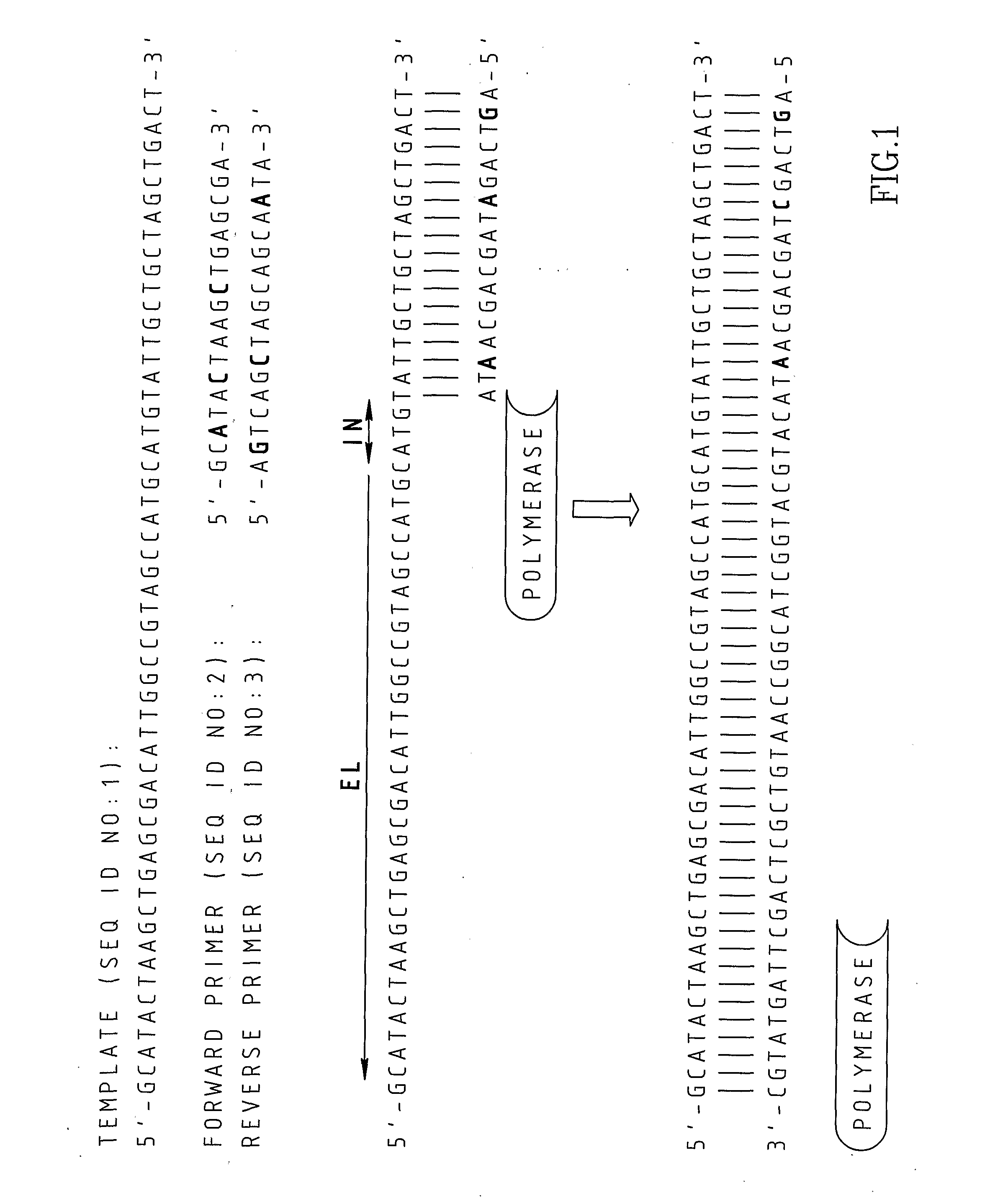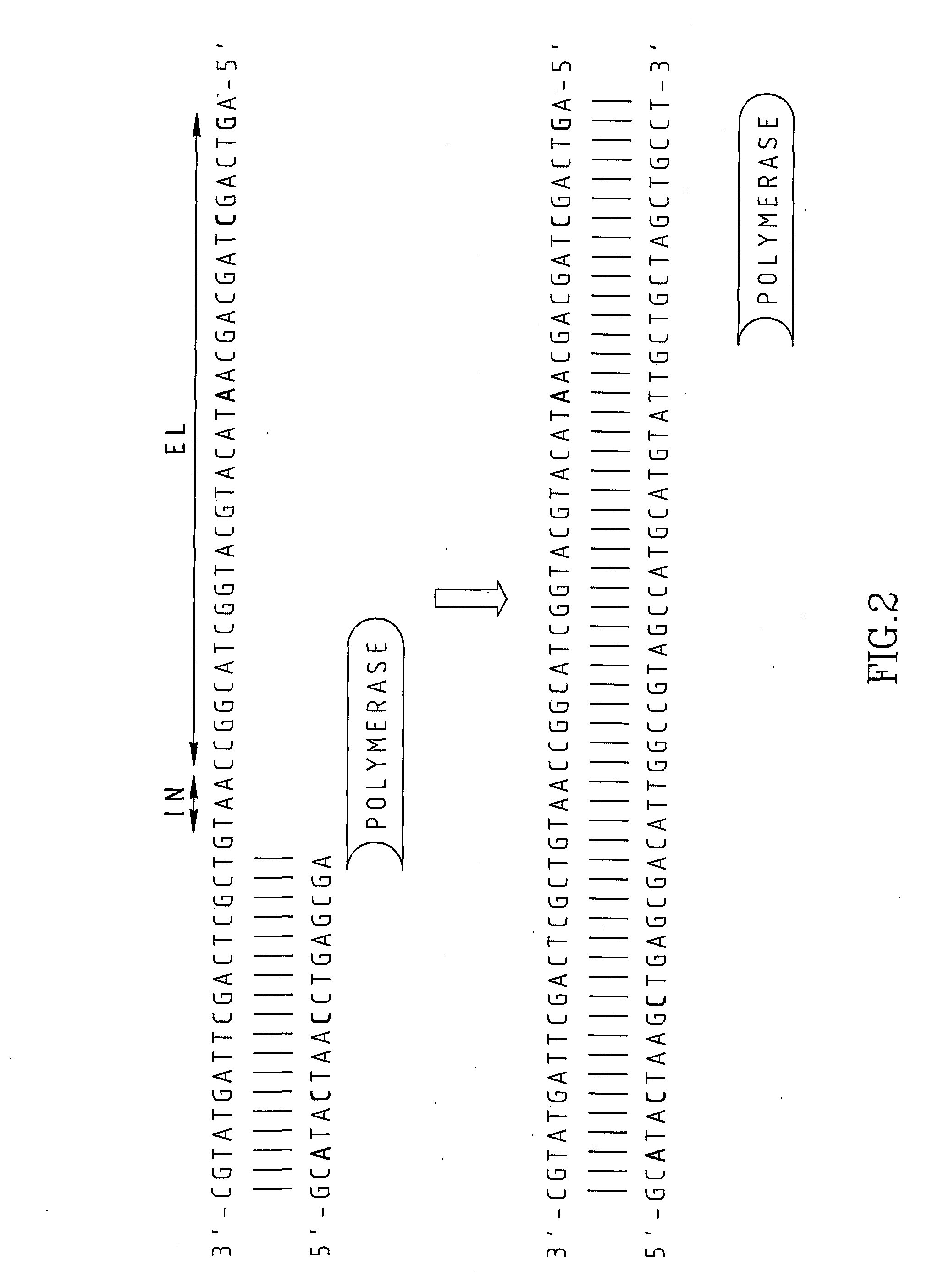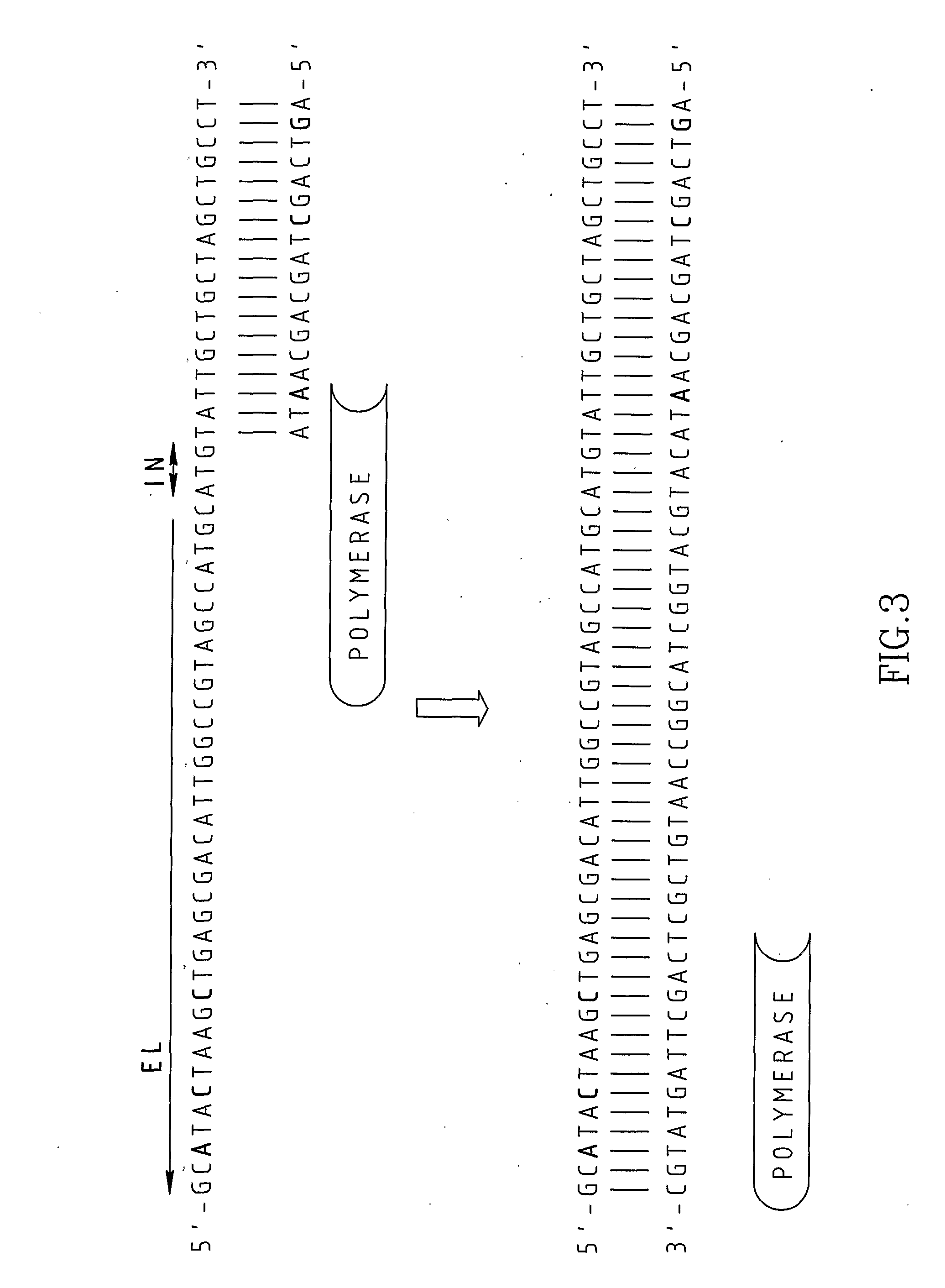Chimeric primers for improved nucleic acid amplification reactions
a nucleic acid amplification and primer technology, applied in the field of chimeric primers for improving the amplification of nucleic acids, can solve the problems of difficult interpretation of hrm results, deterioration of sensitivity and quality of reaction, and inability to detect, so as to improve the specificity and sensitivity of target sequence detection and quantification, reduce the formation of non-specific amplification products, and reduce the effect of efficiency
- Summary
- Abstract
- Description
- Claims
- Application Information
AI Technical Summary
Benefits of technology
Problems solved by technology
Method used
Image
Examples
example 1
[0083]Real time PCR was performed on 104 copies of the 16S RNA gene of bacterial strain Ehrlichia canis (EC) with DNA primers and with RNA / DNA chimeric primers.
[0084]DNA primers:
Forward primer:5′-TCGCTATTAGATGAGCCTACGT-3′(SEQ ID NO: 4)Reverse primer:5′-GAGTCTGGACCGTATCTCAGTT-3′(SEQ ID NO: 5)
[0085]RNA / DNA chimeric primers
[0086](embedded RNA bases are bolded):
Forward primer:5′-TCGCUATUAGATGAGCCUACGT-3′(SEQ ID NO: 6)Reverse primer:5′-GAGTCTGGACCGUATCTCAGTT-3′(SEQ ID NO: 7)
[0087]Results are presented in FIG. 5. As can be seen, significant artifacts can be detected in the absence of template (see non-template control (NTC) curve) after cycle 27 when using DNA primers, but remain under the detection threshold when using chimeric primers. Indeed the C(t) values of the specific template dependent products are delayed for approximately 3 cycles but the elimination of non specific products enables prolonging of the detection for at least 13 cycles more than the regular DNA primers reaction.
[0...
example 2
[0089]Real time PCR was performed on serial dilutions of the 16S RNA gene of bacterial strain Ehrlichia canis (EC) with the same DNA and chimeric primers of example 1. Results are presented in FIGS. 7 A and 7 B. Another Real time PCR, whose results are presented in FIGS. 8 A and 8 B, was performed on serial dilutions of the hsp70 gene of bacterial strain Babesia canis (BC) with the following primers.
[0090]DNA primers:
Forward primer:5′-GTCATCACTGTGCCTGCGTACT-3′(SEQ ID NO: 8)Reverse primer:5′-GCATGACGTTGAGACCGGCAAT-3′(SEQ ID NO: 9)
[0091]RNA / DNA chimeric primers:
[0092](embedded RNA bases are bolded):
Forward primer:5′-GTCATCACTGTGCCTGCGUACT-3′(SEQ ID NO: 10)Reverse primer:5′-GCATGACGTTGAGACCGGCAAT-3′(SEQ ID NO: 11)
[0093]This example demonstrates that the sensitivity of the amplification reaction increases when using RNA / DNA chimeric primers. In both cases using chimeric primers enables the detection of low concentrations of gene copies up to a few single copies per tube.
example 3
[0094]In this example a Tm analysis was carried out following qPCR that was performed with DNA and chimeric primers on serial dilutions of the Canine ACTB gene.
[0095]DNA primers:
Forward primer:5′-GCGCAAGTACTCTGTGTGGAT-3′(SEQ ID NO: 12)Reverse primer:5′-GTCGTACTCCTGCTTGCTGAT-3′(SEQ ID NO: 13)
[0096]RNA / DNA chimeric primers:
[0097](embedded RNA bases are bolded):
Forward primer:5′-GCGCAAGUACTCTGTGTGGAT-3′(SEQ ID NO: 14)Reverse primer:5′-GTCGUACTCCTGCTTGCTGAT-3′(SEQ ID NO: 15)
[0098]This example demonstrates the increased specificity obtained by using chimeric primers for PCR preceding HRM analysis in low template concentrations. When using DNA primers (FIG. 9A) peaks of non-specific products can be seen in the Tm plot in the range from 70° C. to 78° C., while the Tm peaks of the expected amplicons in high concentration of template range from 81° C. to 82° C. FIG. 9B shows the Tm plot obtained when using DNA / RNA chimeric primers. Here one can see only the expected peaks at low as well as a...
PUM
| Property | Measurement | Unit |
|---|---|---|
| melting temperature | aaaaa | aaaaa |
| Tm | aaaaa | aaaaa |
| Tm | aaaaa | aaaaa |
Abstract
Description
Claims
Application Information
 Login to View More
Login to View More - R&D
- Intellectual Property
- Life Sciences
- Materials
- Tech Scout
- Unparalleled Data Quality
- Higher Quality Content
- 60% Fewer Hallucinations
Browse by: Latest US Patents, China's latest patents, Technical Efficacy Thesaurus, Application Domain, Technology Topic, Popular Technical Reports.
© 2025 PatSnap. All rights reserved.Legal|Privacy policy|Modern Slavery Act Transparency Statement|Sitemap|About US| Contact US: help@patsnap.com



